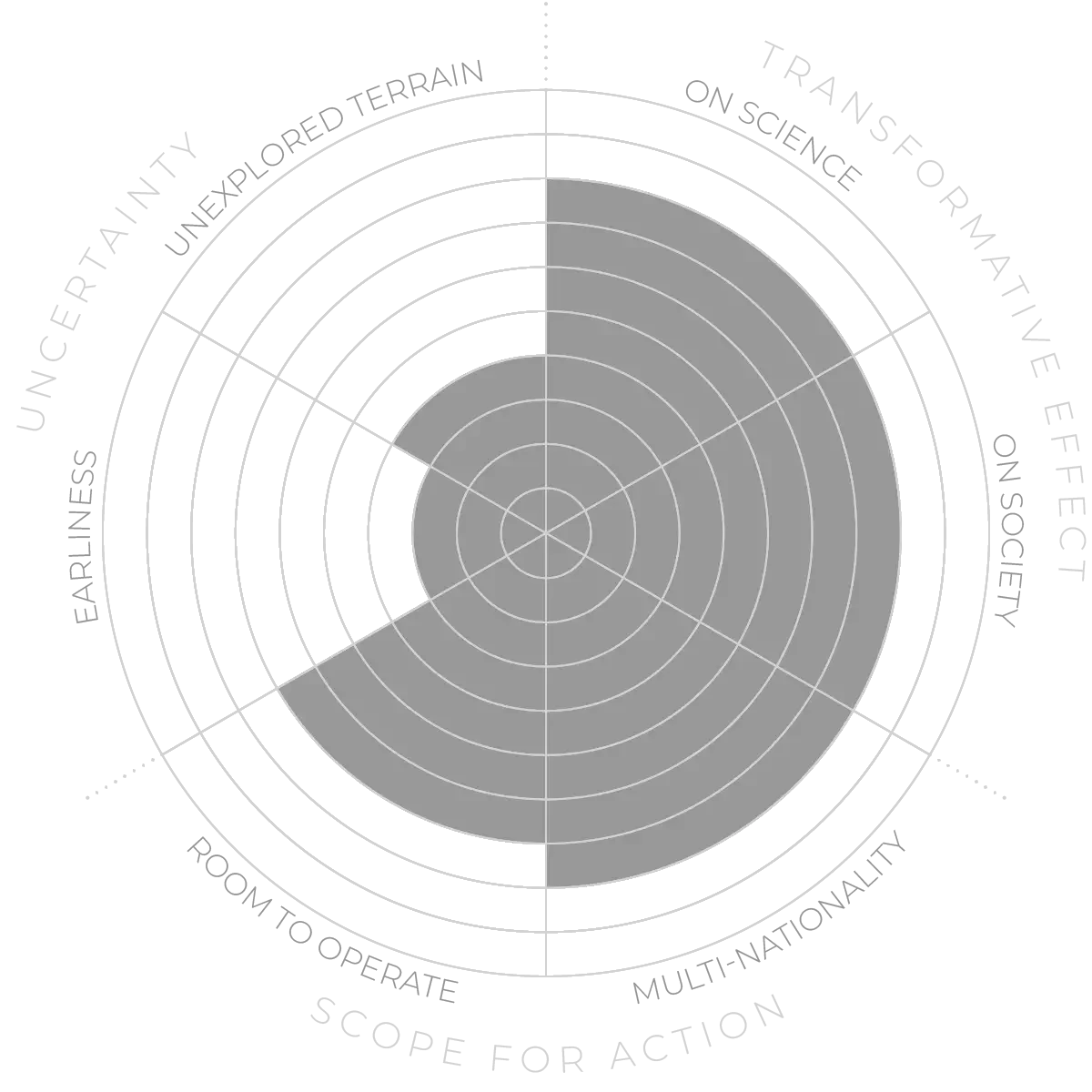Future Horizons:
10-yearhorizon
Pathogen identification improves
25-yearhorizon
Technological advances accelerate precautionary action
The same fungus can exist as either a commensal or a pathogenic organism. For example, Candida albicans is an opportunistic fungus that can choose either lifestyle. As a benign resident of the human microbiome, C. albicans is an ovoid yeast. However, as it transitions to a pathogen, its shape changes, extruding filamentous hypha that penetrate host cells. Research is under way to study the gene products relevant in pathogenesis. The damage done by C. albicans, for example, is largely attributable to a peptide it secretes, candidalysin. It has been shown to be essential in the ability of C. albicans to cause cell damage and host immune activation.
Environmental factors encourage these transitions. Climate change has forced fungi into new niches as higher temperatures push them to adapt to the sorts of conditions that have, for millions of years, kept them from colonising warm mammalian bodies. Additionally, agricultural use of the same few types of fungicides used in medicine to fight infections have ensured that fungi adapt to our available drugs, which are now losing efficacy,9 and global trade has brought non-native species into places that have not evolved defences against them.
Scientific advances will change the way we study other mechanisms of pathogenesis and how they arise, take effect and spread. They will also allow us to identify specific agricultural practices, trade routes and climate problems that can be targeted for biosecurity interventions.
Mechanisms of fungal pathogenesis and symbiosis - Anticipation Scores
The Anticipation Potential of a research field is determined by the capacity for impactful action in the present, considering possible future transformative breakthroughs in a field over a 25-year outlook. A field with a high Anticipation Potential, therefore, combines the potential range of future transformative possibilities engendered by a research area with a wide field of opportunities for action in the present. We asked researchers in the field to anticipate:
- The uncertainty related to future science breakthroughs in the field
- The transformative effect anticipated breakthroughs may have on research and society
- The scope for action in the present in relation to anticipated breakthroughs.
This chart represents a summary of their responses to each of these elements, which when combined, provide the Anticipation Potential for the topic. See methodology for more information.



